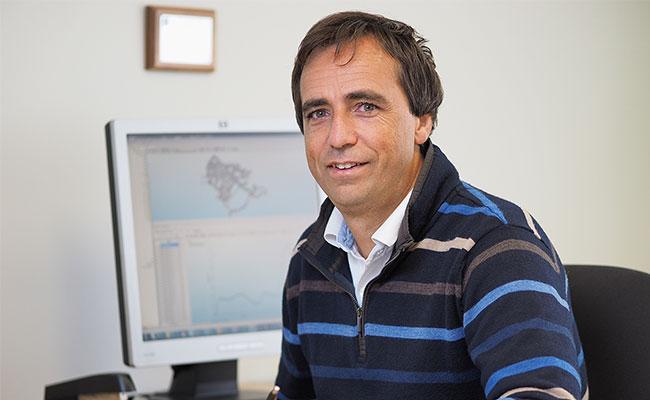Interview With Martin Pleau, Process Control Expert
Controlling sewer systems in real time to improve water quality in urban areas

Wet Weather Infrastructure and CSOs
Martin Pleau holds a PhD in Chemical Engineering from Queen’s University with a specialization in process control. During his 25 years with Tetra Tech, he pioneered the development of Csoft®, a model-based control software designed to improve the management of urban drainage systems and protect human health and the environment. This innovative software is now used to manage water systems in several large cities in North America and Europe. It won the prestigious Franz Edelman Award 2019 for achievement in advanced analytics, operations research, and management science for Tetra Tech and the Louisville Metropolitan Sewer District.
As an expert in process control and technical leader in urban hydrology and hydraulics, Martin has contributed to the successful design, implementation, and operation of various control systems aimed at mitigating flooding, reducing combined sewer overflows, and improving water quality in urban areas. As a researcher, he has authored and co-authored numerous papers. He has been a dissertation advisor and guided graduate students. He also was secretary and president of the IAHR/IWA Joint Committee on Urban Drainage, Work Group on Real-Time Control.
What led you to a career as a process control engineer specialized in the management of urban drainage systems?
Fresh out of school with a PhD in chemical engineering and a specialization in process control, I figured that my career would lead me to the chemical industry. However, an opportunity came up to join a research group at BPR (now Tetra Tech) in Quebec City, which was developing real-time control for sewer networks. I quickly became passionate on the subject; I think in part because of the gargantuan challenges related to the successful implementation of a real-time control system, and in part by the thought of improving the quality of life in urban areas. I am still deeply involved in the real-time management of urban drainage systems and more passionate about it than ever.
What does it mean to manage sewer networks in real time?
Real-time management of sewer networks uses a combination of sensors to measure the process, flow regulators to adjust the process, controllers to activate the flow regulators, and communication devices to transmit data between these elements. The flow regulators are made of movable diversion elements and pumps to achieve flood protection and pollution control and reduce operational costs. These active elements can be controlled manually or via algorithms ranging in complexity from simple heuristic rules to sophisticated optimization-based control.
As water flows into the sewer system during a storm event, the automated system routes the wastewater to areas that have additional storage, conveyance or treatment capacity. Real-time control not only maximizes the use of the existing network to achieve better performance, but it also eliminates the need for future facilities that would otherwise be required to meet regulatory requirements.
What are the key considerations to successfully implement a real-time control system for urban drainage networks?
Before implementing a real-time control system, the first step is to assess the objectives pursued by the owner of the system and the benefits that can be achieved through this technology. Some sewers are suited for real-time control, others are not.
The next step is to identify the control strategies best suited for the client while considering the objectives pursued, the financial constraints of the project, and the owner’s capacity to maintain and operate a real-time control system with various degrees of sophistication. In some applications, local control provides the best cost-benefit ratio. For large and complex sewer systems, a global control strategy is usually the best option.
Technical considerations alone are not enough to guarantee the success of a real-time control project. Human considerations are also very important. Many politicians and engineers feel that the risk associated with the implementation of a relatively new approach such as real-time control is too high to endeavor such a route. That is why the stakeholders must be involved in the decision process at all stages of the project. Operators must be briefed and trained so that they understand their new role. The goal is not to replace operators with machines, but to introduce technology that will help them manage the system better in wet weather.
What is the future for the real-time management of urban drainage systems?
Due to stringent regulations in North America and Europe, most real-time control systems are implemented in combined sewer systems and designed to minimize combined sewer overflow volumes or frequency of occurrence. However, regulations are evolving toward water quality requirements. It is likely that in the near future, more real-time control implementation will be designed based on water quality objectives. Ultimately, real-time control systems should integrate water collection networks and wastewater treatment facilities to optimize the quality of the receiving water bodies.
Objectives and applications will also be extended to address climate change. I think real-time control for stormwater systems will become a standard approach to address issues related to flooding, drought, and stormwater pollution. In California, there are currently several stormwater harvesting augmentation projects underway aimed at recycling stormwater for irrigation and drinking water while reducing pollution and flooding.

